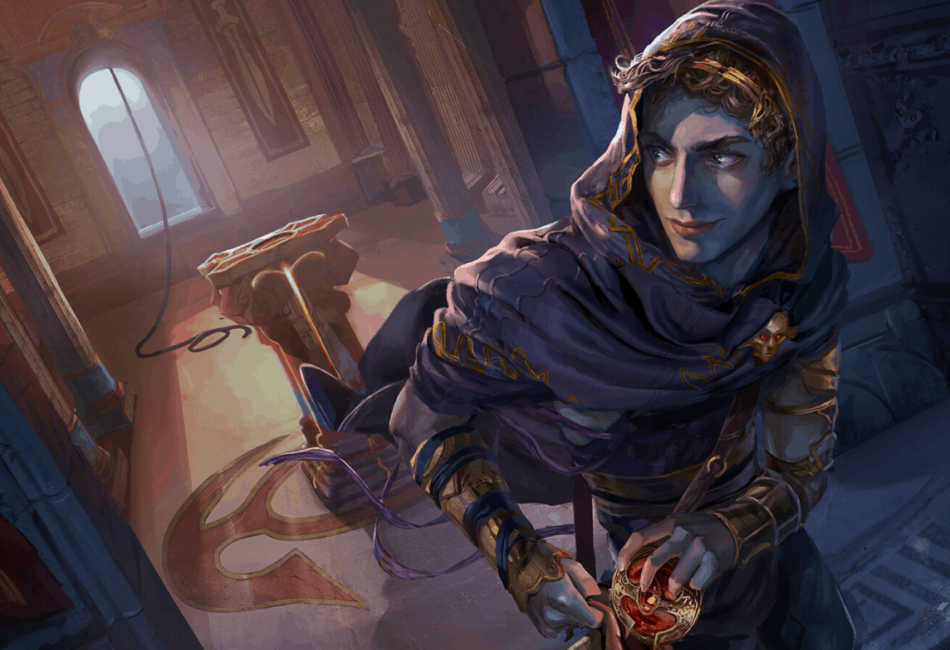While the sorcerer has magic woven into their very being and clerics are gifted powers from a divine being, bards harness the magic found in story and song.
As a bard, your main abilities are centered around spellcasting and bardic inspiration. The bard’s spell list offers some unique options that even wizards can’t cast.
Bards start the game with proficiency with Dexterity and Charisma saving throws. Dexterity saving throws are used for avoiding fireballs and lightning bolts while Charisma saving throws are less prevalent but can be useful for avoiding effects like being sent to another plane of existence. So, that’s helpful.
You’ll also gain proficiency in light armor and a small selection of weapons. Melee subclasses will be able to gain medium armor proficiency and more weapons but most bards sit removed from the battle rather than on the frontline and don’t have a high AC.
Three musical instruments and three skills cement you as a person of many talents and—alongside rogues—bards are one of the most skilled classes. Notably, you can pick any three skills whereas most classes have you pick from a select few. Perception, persuasion, and stealth can be great skills to have. Welcome to a Bards 5e Guide.
Spellcasting (1st level)
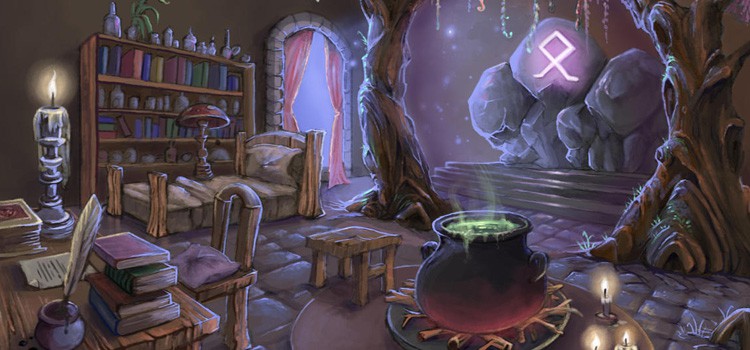
Bards are full spellcasters and although you start with one less cantrip than most casters, your spell slots scale equally to clerics, druids, sorcerers, and wizards. The spells that you can cast rely on your knowledge.
Therefore, bards have a limited amount of spells that they know. Unlike clerics and druids—who can swap out their entire spell list every day—once you learn a spell, it’s part of your list for good. You can only swap out one spell every time you level up, so it’s incredibly important to think about which spells you want.
Bards’ spellcasting relies on Charisma, representing the force of your charm and personality that permeates the performance of your art. In addition, you can use your instrument of choice as a spellcasting focus.
Most bard spells are not damage-dealing spells, seeking instead to disable your enemies and empower your allies. These spells usually require enemies to make saving throws instead of you making an attack roll. In order to use your spells effectively, you will need to size up your enemies’ weaknesses.
Much of this will be guesswork but take a moment to think about how the large brute you’re fighting probably has a low Wisdom score or the enemy spellcaster probably has a low Strength score. If you cast a spell with the appropriate saving throw, you’ll be much more effective with your spells. It’s therefore important to have a variety of spells that can target different types of enemies.
Since the DMs dice rolls will primarily be determining whether or not your spells succeed, consider whether you want to play a bard if the DM seems to always succeed on their saving throws.
Bardic Inspiration (1st level)
Bardic Inspiration is one of the keystone abilities of the bard. As a bonus action, you can inspire an ally and give them a small bonus to an attack roll, ability check, or saving throw. The boost that you give them increases as you gain levels in this class.
Turning a miss into a hit can turn the tide in battle, making bards a useful option to have. Unfortunately, it can be difficult for your allies to know when exactly to use their inspiration. The good news is that you aren’t the one who has to worry about that. However, you will need to constantly remind your party that they have an inspiration die to use.
Jack of All Trades (2nd level)
This ability is much more powerful than it seems. You add half your proficiency bonus to any ability check that you aren’t proficient in, making you good at everything. Paired with your high Charisma, you’ll want to put yourself in situations where you’re making the checks.
This ability isn’t limited to skills. Other ability checks include initiative rolls, lifting things, holding your breath, disabling traps, and picking locks. It also includes the ability checks for spells like Counterspell and Dispel Magic, making bards the most effective casters of these spells.
Song of Rest (2nd level)
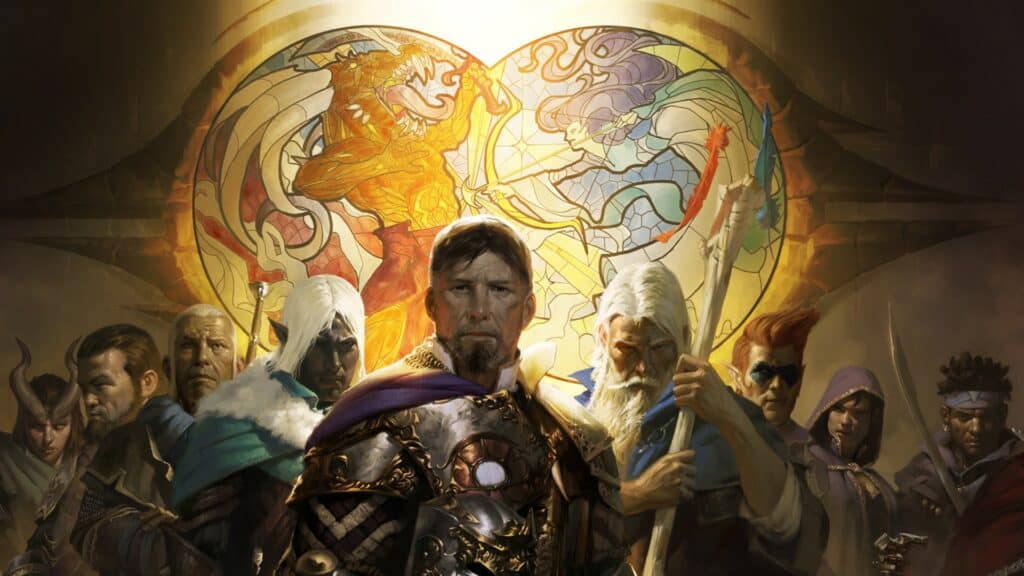
Gather ‘round the campfire as I sing you a song to help you forget about your troubles. This ability lets you and your allies regain additional hit points when they heal during a short rest. It’s also nice that this scales as you level up. You just need to remember to use it.
Expertise (3rd level)
Enhancing the bard’s ability to succeed on skill checks, you can double your proficiency on two skills or tools.
Font of Inspiration (5th level)
Your bardic inspiration now recharges after a short rest instead of a long rest. Assuming you’re taking two short rests a day, this effectively triples the amount of inspiration you can give out in a day.
Countercharm (6th level)
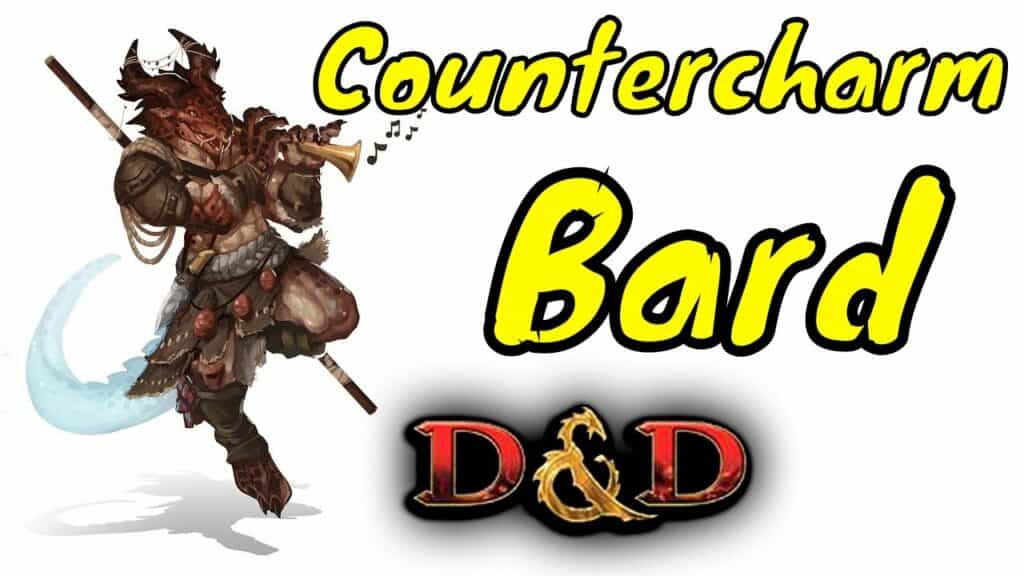
This is one of the worst bard abilities. While the paladin gains an always-on aura that boosts their allies’ saving throws, this ability lets you use your action to give your allies advantage on saving throws against being frightened or charmed.
This means that you have to sacrifice your action, correctly predict when an enemy is going to use a frightening or charming effect and your allies still might fail.
Magical Secrets (10th/14th/18th level)
This ability lets you pick the best spells from any class’s spell list. You can’t pick higher spells than what you’re capable of casting but this opens the door for powerful options like Wall of Force and Find Greater Steed.
Superior Inspiration (20th level)
The capstone ability of bards gives you a bardic inspiration if you roll initiative and you have none left. This ability is very anticlimactic and one of the worst 20th level abilities. When other classes can transform into dragons or be consistently aided by a god, this ability falls flat, encouraging a lot of players to multiclass instead.
Optional Abilities (TCoE)
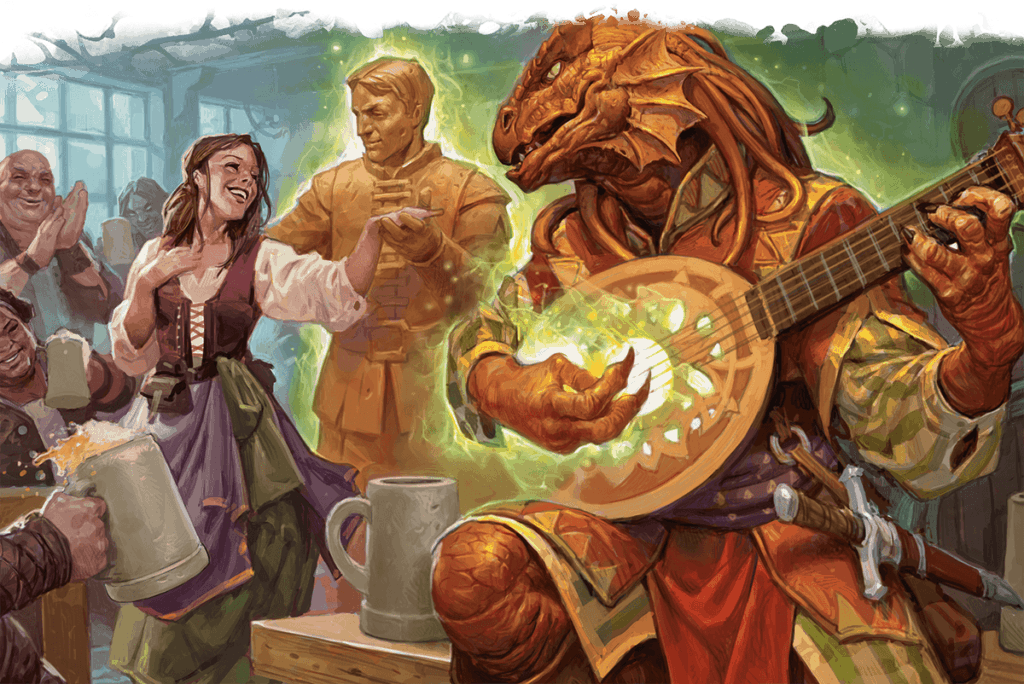
Tasha’s Cauldron of Everything published optional class features for every class. Since these features are optional, you’ll need to check with your DM if you can use them. For the bard, these do not replace any other abilities.
Additional Bard Spells
Many of these spells lean into the bard’s ability to bolster allies and disable enemies. After reading through the new options, it seems strange that some of these options like Aid weren’t already on the bard’s spell list.
Magical Inspiration
This ability allows ally spellcasters to add a bardic inspiration die to their spell’s damage or healing roll. This can be a useful option if you have a bardic inspiration die and don’t need to use it for anything else. Instead of letting the ten minutes run out, you can gain a small boost to your spells.
Bardic Versatility
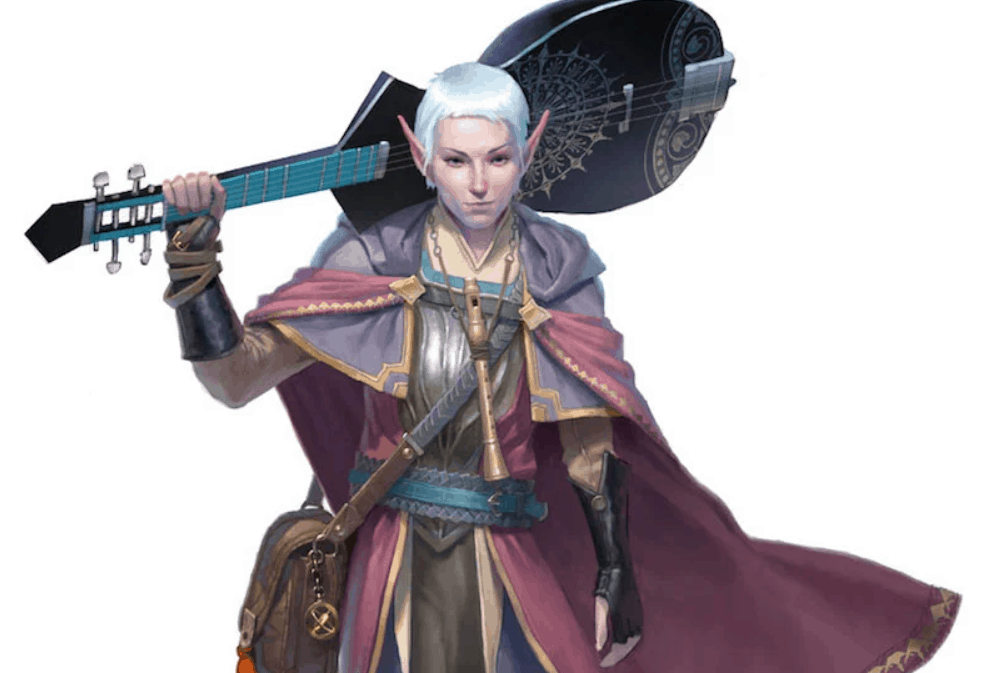
Like most classes, this feature lets bards retrain Expertise and cantrips. This is great if you feel like you’re stuck with a cantrip or skill that you never use.
Subclasses
There are eight official subclass options for bards. Because bards are one of the most versatile classes, these classes vary wildly from each other with some focusing on spellcasting, others focusing on melee options, and others emphasizing the bard’s skills and bardic inspiration.
College of Lore (PHB)
The college of lore emphasizes the bard’s spellcasting, making it one of the most powerful options for the bards.
At the 3rd level, you gain three additional skill proficiencies. You now are proficient in at least eight skills and have expertise in two.
At the 3rd level, you also gain the ability to use your bardic inspiration to subtract from an enemy’s attack roll, ability check, damage roll. If you’re facing an enemy that deals a lot of damage in one hit, turning that hit into a miss can be a critical choice.
At the 6th level, you gain Magical Secrets four levels earlier than every other subclass. At this level, you can cast up to 3rd level spells. Pick up Counterspell or Revivify and laugh in the face of death. Alternatively, if you’re multiclassing into another full casting class, do it before this level so you can pick up 4th level spells.
At the 14th level, you can add a bardic inspiration die to an ability check that you make. It’s good to know that you have this up your sleeve for that crucial ability check. Add this to a Counterspell ability check and with maximum Charisma, you can counter a 9th level spell roughly 70% of the time. It’s even more powerful because you can roll the bardic inspiration after the ability check but before the DM tells you whether or not it succeeded.
College of Valor
This college leans into the bard’s martial capabilities. While the idea of empowering your own strikes with magic sounds like an interesting idea, you’ll always be a full spellcaster and it’s hard to justify hitting something with a sword when you can paralyze them and let the paladin cut them in half.
At the 3rd level, you gain proficiency with medium armor, shield, and martial weapons. This is a necessity for a melee bard since you’ll have fewer hit points than fighters and paladins and need a higher AC to survive.
Your spellcasting relies on Charisma while your AC and weapon attacks will rely on Dexterity, raising an issue as to what to prioritize when gaining ability score increases. A multiclass dip into hexblade warlock can fix this problem as hexblades can use their Charisma for both. Also, consider using a ranged weapon so you don’t have to wade into battle to deal weapon damage.
Also at 3rd level, your allies can use your bardic inspiration to add to their damage rolls. A small damage boost might not be as good as determining whether or not an attack hits or misses but it’s a fine option for your party to have.
At the 6th level, you can attack twice when you take the attack action. This is absolutely necessary in order for weapon attacks to be a viable option.
At the 14th level, when you use your action to cast a spell, you can attack with a weapon as your bonus action. While this isn’t too fancy, it’s great to not have to choose between spells and weapons every turn.
College of Glamour
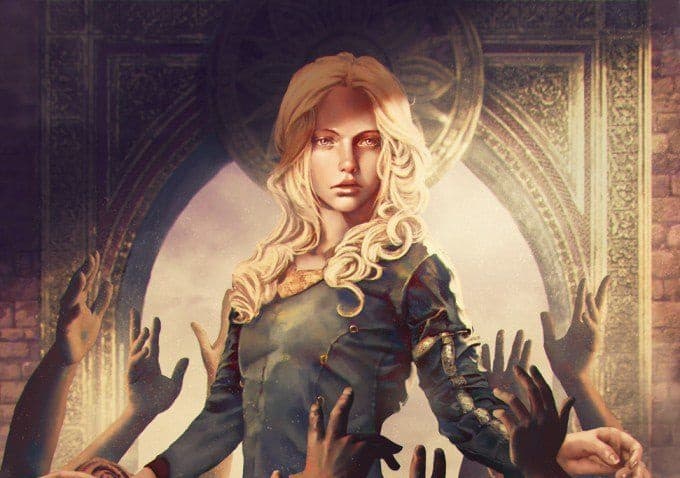
This college emphasizes the bard’s ability to charm other creatures. Tied to the feywild, glamour bards can force other creatures to think they’re the most magnificent being in the multiverse and use your majestic presence to boss them around.
At the 3rd level, you can use your bardic inspiration to give your party temporary hit points and move without provoking opportunity attacks. Using this in the middle of a battle to reposition your entire party can be extremely powerful.
Also at the 3rd level, you can perform for one minute and charm a group of people. Anyone who fails their saving throw becomes completely starstruck by you. This is a fun and interesting option to cast Charm Person on multiple creatures for free every short rest.
At 6th level, you can enter into a majestic state of being for one minute during which you can cast Command as a bonus action every turn for free and if you’ve already charmed them, they automatically do what you say.
At the 14th level, you gain an otherworldly visage that causes people to wonder whether they should actually hit you. This is similar to the Sanctuary spell with some key differences: it lasts a minute without concentration, it’s a Charisma saving throw, and even if the attacker succeeds, they have a disadvantage on a saving throw against a spell you cast in the next turn, opening the door for a powerful spell you can be confident will work.
College of Swords

Similar to the college of valor, this college emphasizes melee and has a lot of the same issues. It is hard to justify focusing on melee when you’re a full spellcasting class. The college of swords forgoes inspiring others and instead uses their bardic inspiration dice to empower their own strikes.
At the 3rd level, you gain proficiency with medium armor and the scimitar and can use a melee weapon as a spellcasting focus, a fighting style, and this subclass’s signature ability: blade flourish.
Blade flourish allows you to use your bardic inspiration when you make an attack to add to the damage you deal and give you one additional property. The options are a boost to your AC, hitting multiple creatures, and a shove attack.
At the 6th level, you gain an extra attack, which is necessary to keep up with other classes.
At the 14th level, you can use a d6 instead of your bardic inspiration dice to use your flourish. This means you can actually start inspiring others and use a flourish without immediately running out of resources.
College of Whispers
The rogue equivalent of the bard, college of whispers bards are those who use the friendly reputation of a bard to sneak into all sorts of situations for their own gain. Most bards from this college pretend to follow another college and keep the truth hidden. Play a whispers bard if you want to be sneaky
At the 3rd level, you gain the ability to spend a bardic inspiration to deal extra psychic damage to your weapon attacks. This is the bard’s equivalent to the rogue’s sneak attack damage but it utilizes the bardic inspiration resource.
Also at the 3rd level, you can speak to a humanoid for a minute and cause them to be frightened of you or someone else for an hour. Keep in mind that this effect ends if the creature or its allies are attacked, so this ability is designed for social situations. It also only works on humanoids, so if your DM prefers throwing monsters at you, this might not be useful.
At the 6th level, you can kill someone and then become them. Trying to infiltrate a stronghold? Lure a single guard, kill them and wear their shadow so you can walk in undisturbed. While wearing their shadow, you gain basic information from the deceased. Again, this feature only works on humanoids, so monster-heavy adventures won’t find as much use.
At the 14th level, you gain the ability to whisper into a creature’s ear and charm them for 8 hours. If they fail their saving throw, they think you know their deepest secret. They obey your commands from fear you’ll reveal this secret. Unlike the other abilities, this works on any type of creature, you just need to share a language with them. Pick a race and background to get as many languages as possible (half-elf courtier gives you five languages) or cast Tongues before you try this to ensure you aren’t wasting this ability.
College of Creation
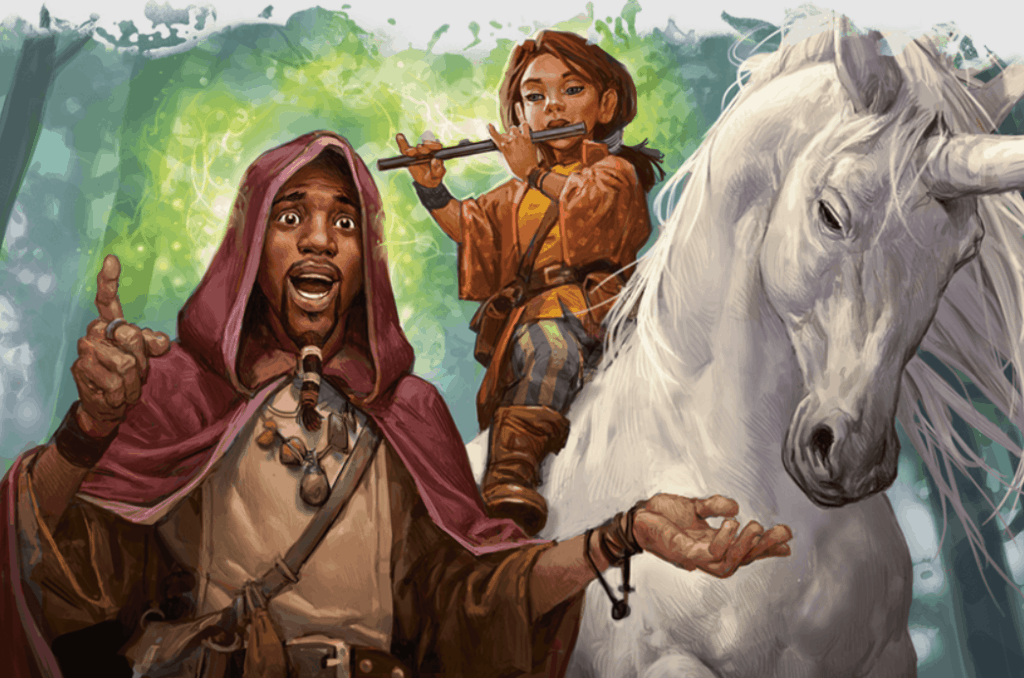
The college of creation bard is themed around the premise that the magic that bards wield harkens back to the creation of the world itself. As such, they are able to harness that magic to create objects out of nothing.
At the 3rd level, you create a mote of potential: a tiny spark or music note, every time you give someone your bardic inspiration. This mote gives your ally an additional effect when they use the die according to the roll they use it for. They can roll it twice for an ability check, deal thunder damage for an attack roll, or gain temporary hit points for a saving throw.
Also at the 3rd level, you can create a non-magical item worth no more than twenty times your bard level. Although it only lasts a few hours, you can create that piece of equipment that you didn’t buy when you were in town exactly when you need it. You could even whip up some scale mail or other armor for an ally to wear for a couple of hours.
At the 6th level, your powers of creation increase as now you are able to enchant a non-magical item into a Dancing Item. If you’ve ever wanted Lumière from Beauty and the Beast by your side as you stride into battle, this is the choice for you. The Dancing Item acts on your turn and can attack. There’s also room for plenty of shenanigans as the item has a flying speed and a pretty high Strength score. A willing DM might let it pick you up.
At the 14th level, you can create five non-magical items instead of one and you are no longer limited by the value of twenty times your level. This has been clarified by Jeremy Crawford to mean that you can even create the material components for spells. Need to cast True Resurrection? Create a diamond worth 25,000gp and use it instead of actually spending the money.
College of Eloquence
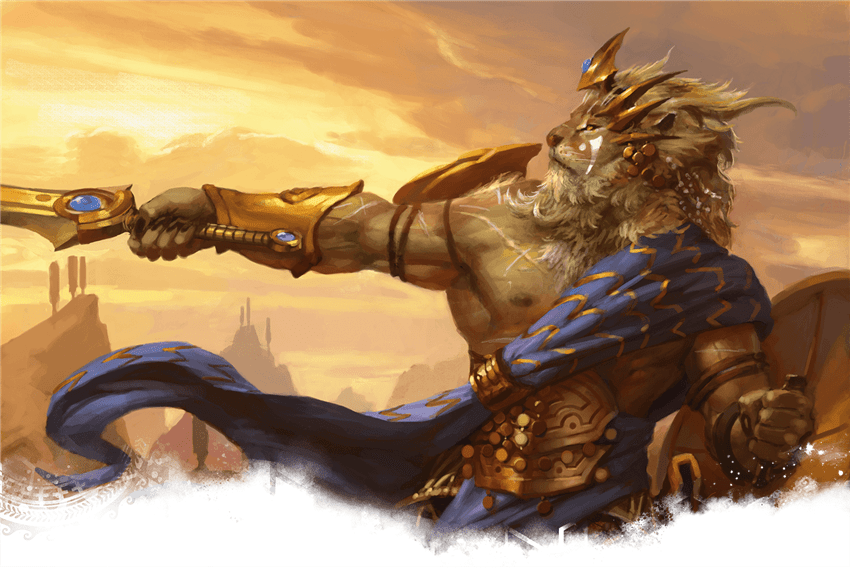
The college of eloquence leans into the bard’s oratory performance and relies the most heavily on the use of bardic inspiration. Bards that follow this college are theater kids, debaters, and the original bard Shakespeare.
At the 3rd level, any time you persuade or deceive someone, you treat a roll of 9 or lower as a 10. Since this is the same level you gain expertise, you can have as high as a +9 to these rolls. Did you roll a natural 1? Well, that’s still a 19.
Also at the 3rd level, you can use your Bardic Inspiration to unsettle a creature. The number you roll is subtracted from the target’s next saving throw. Since this uses your bonus action, you can immediately follow it up with a spell for a powerful combination.
At the 6th level, allies who use your bardic inspiration retain the die if the roll they used it on still failed. This drastically improves the power of your bardic inspiration. There’s always a question for your party of when to use the die. If they think they’re too far away from succeeding on the roll, they won’t use it. But now, they have nothing to lose.
Also at the 6th level, you can make your speech understandable to other creatures regardless of what language they speak. Unfortunately, this ability says nothing about whether or not you understand them, potentially creating a one-way street for communication.
At the 14th level, you gain even more uses of your bardic inspiration. This ability allows you to use your reaction to give out another bardic inspiration die when someone uses a different one without expending any of your actual dice. Assuming you have max Charisma, you can give out five dice every short rest, equally 15 a day. This ability gives you another five for the day. The only downside is that at this level, your reaction might be more valuable for other options like Counterspell to use on this.
College of Spirits
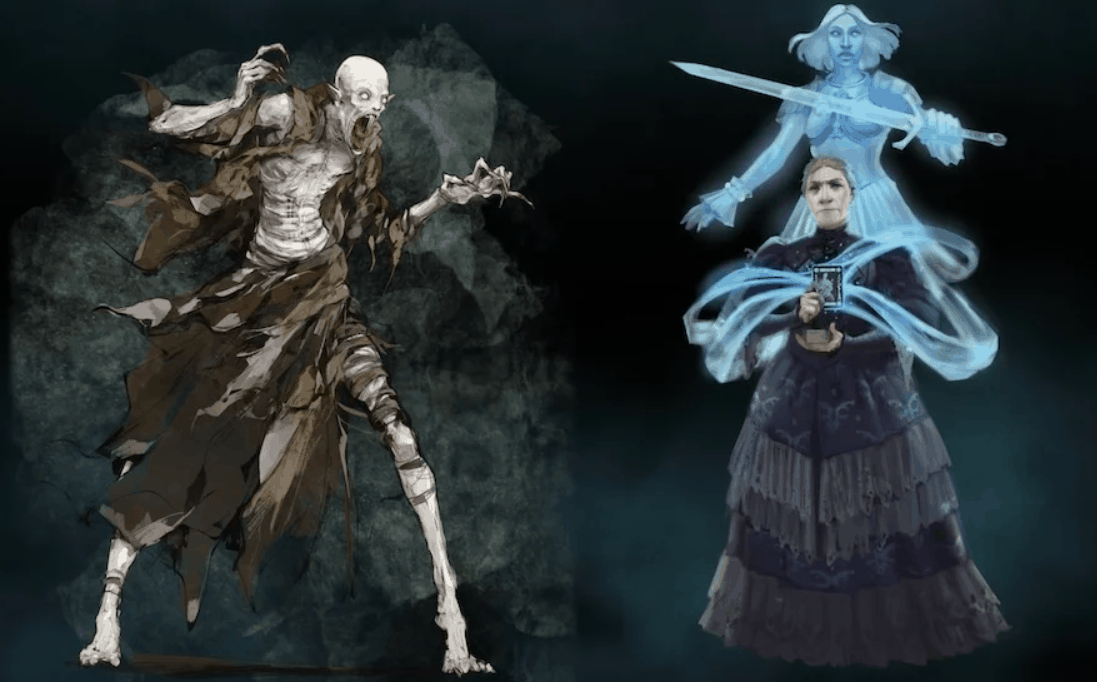
The college of spirits bard is the traveler who tells ghost stories around the campfire to intrigue, mystify and ever-so-slightly scare their audience. The class revolves around a mechanic called Tales from Beyond, which has a random effect each time you use it. With all random effects, this can make it hard to plan for and upset the power gamers but there’s a lot of fun in this subclass to explore.
At the 3rd level, you learn the Guidance cantrip. This is the best buffing cantrip and makes sense for a bard to have. Normally, clerics are the only ones to have access to it. You can also use a candle, crystal ball, spirit board, or a tarokka deck as a spellcasting focus for your bard spells.
Additionally, at the 6th level, you can add a d6 to the damage or healing roll of a spell you cast using this focus. Since you only use your focus to cast spells with material components, this severely limits the use.
At 6th level, you gain the ability to use your bardic inspiration to hear a scary story called a Tale from Beyond, store it in your mind, and then unleash it upon a creature of your choosing. The initial hearing takes a bonus action and is determined randomly by using the die. Then, you use your action to unleash it. The effects can range from spell attacks for enemies to temporary hit points for allies to invisibility. The situational nature of these effects could make it difficult to use effectively. However, you have more control over it than a wild magic sorcerer since it’s not unleashed immediately.
Also at the 6th level, you can effectively hold a séance to gain a magical secret for the day. You learn one additional spell for the day that you choose from any class’s spell list and it has to be from the divination or necromancy school of magic. Although this limits your options, it does give you access to Revivify, Summon Undead, and Arcane Eye which can be very useful to have for a day.
At the 14th level, you can roll twice when determining which of the Tales from Beyond effects you gain. If you roll the same number on both dice, you can pick from any of them. This increases your control over the ability but it still is random.
Race Options
If you’re not able to use the Customized Origin feature from TCoE—which allows you to redistribute ability score increases—you’ll want to pick a class with a bonus to Charisma since both spellcasting and bardic inspiration are based on it.
Races with a +2 bonus to Charisma:
- Aasimar: Protector aasimar’s flight is good for all bards while the fallen aasimar’s frightening ability suggests that you need to be in melee to be effective.
- Half-Elf: In addition to the Charisma boost, you can increase two other abilities (typically Dexterity and Constitution) and you gain two skill proficiencies, leaning into the bard’s skillfulness.
- Tiefling: You also gain fire resistance, a cantrip, and two spells you can cast for free each day. Variant tieflings open up some powerful options like flight.
- Yuan-Ti Pureblood: One of the most powerful race options, you are immune to poison damage, have magic resistance, and innate spellcasting.
- Changeling: You don’t get much more from a changeling other than the ability to shapeshift. But that’s pretty good.
- Satyr: You also get magic resistance, two skills you were going to pick up anyway, and you’re immune to spells that only target humanoids.
- Custom Lineage: Darkvision and one feat of your choice can make for some powerful options.
Races with a +1 bonus to Charisma:
- Eladrin: You get a free short-range teleport each day can be useful for many reasons including getting yourself out of trouble.
- Drow: You get superior darkvision, additional weapon proficiencies, a cantrip, and two spells you can cast for free each day.
- Dragonborn: You get a breath weapon and damage resistance. The Strength increase will probably go to waste.
- Human Variant: You get a skill and a feat of your choice. A feat from level one is always great.
- Kalashtar: You get an advantage on Wisdom saving throws, psychic damage resistance, and telepathic communication.
- Lightfoot Halfling: The ability to reroll 1s will always be great.
- Tabaxi: You also get two useful skills, darkvision, and a burst of speed.
- Triton: An innate swimming speed, cold resistance, and three spells you can cast for free each day.
- Swiftstride Shifter: A name that’s hard to say out loud, but you get dark vision and the ability to run away, which can come in handy for you.
- Warforged: You get a boost to your AC, immunity to disease, resistance to poison damage, a skill and a tool proficiency and you don’t have to eat, drink or breathe.
- Simic Hybrid: You get darkvision and some animal enhancements to choose from an AC boost to acid spit to climbing or swimming speed.
FAQ
Question: Can you use Bardic Inspiration on yourself?
Answer: No. You choose a creature other than yourself within 60 feet of you and who can hear you to inspire.
Question: What are all of the bard colleges?
• College of Lore (PHB)
• College of Valor (PHB)
• College of Glamour (XGtE)
• College of Swords (XGtE)
• College of Whispers (XGtE)
• College of Creation (TCoE)
• College of Eloquence (MOoT/TCoE)
• College of Spirits (VRGtR)
Question: What race is best for bards?
Answer: Satyrs, Yuan-Ti Purebloods, or Half-Elves are the best choices for bards using the default rules with additional skills, strong class features, and good ability score increases. Custom lineage and variant humans give bards a feat from first level which is a powerful option if the DM allows it.
Question: Are bards good?
Answer: Bards are a great class but they aren’t designed to be the tank of the party. Instead, they take a support role in combat. Some of the subclasses try to force the bard into a melee role but they will always be more powerful when spellcasting.
Question: What does a bard do in D&D?
Answer: The two core mechanics of bards are spellcasting and bardic inspiration. The spellcasting focuses on buffing allies and disabling enemies while bardic inspiration empowers your allies to land their attacks and shore up their resolve.
Question: Do bards have to sing?
Answer: No. Bards can be themed around singing, instruments, art, storytelling, dancing, or any other artistic expression you can think of. Play a beatboxer, a mime, or a breakdancer. Bards are one of the most fun classes to play because there are so many options.
Summary
Bards a powerful, versatile, and unique class. Spellcasting, bardic inspiration, and other subclass features can make it a little trickier for new players but it is worth it. As a bard, you’ll probably do a lot of the talking in social interactions which can be daunting for some players but remember that you can do that however you would like to. Once you get the hang of it, you’ll be singing, dancing, and inspiring your way to victory.
- Armor of Agathys 5e Guide: What is Armor of Agathys? - August 3, 2022
- Oath of the Ancients 5e Guide - August 3, 2022
- Dissonant Whispers 5e Guide - July 20, 2022

